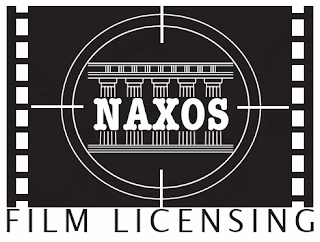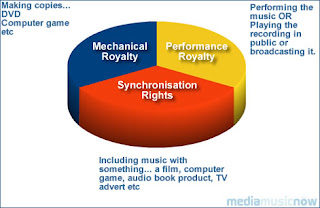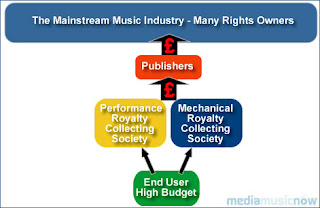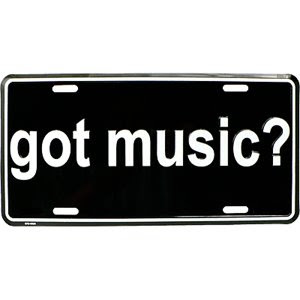Monday, June 21, 2010
Rabbit of Seville
Before I continue, allow me to introduce myself. My name is Marc Chirico and I am an intern in the Licensing Department at Naxos of America, Inc. During my stay here I have been learning about the emotional power harnessed with classical music. One of my responsibilities here is to help create marketing strategies for potential clients, and on my first day I was asked to think of all the places classical music is commonly heard. I never grasped it before, but I came to the realization that classical music is ubiquitous. It’s heard in movies, television shows, video games, greeting cards, websites, ringtones, mobile phone apps, advertisements, movie trailers, educational books, symphonies, Broadway musicals, and even on line at the grocery store. In each setting, the classical music elicits certain emotions within the listening person and therefore enhances the overall experience, whether it’s for educational purposes or for dramatic effect.
My point is this: classical music leaves an emotional impact far deeper than any other genre because of its ubiquity. I can fairly say I learned about classical music through the Looney Tunes, and a major reason why these cartoons have stuck with me ever since is largely due to the music associated with it. “Rabbit of Seville” is of course a parody of the classic opera “Barber of Seville” by Gioachino Rossini — but the surreal thing is that Naxos owns the publishing rights to “Barber of Seville.”
Stay tuned as I will be continuing to write more blog entries about music licensing!
Saturday, October 31, 2009
Film and TV Licensing Conference/Article
As an interesting contrast to this, we at Naxos are actually doing quite well in the licensing game. I attribute most of this to the fact that we are incredibly diversified in the licensing business. I feel we are lucky to have intellectual property that bodes well in so many different areas. Perhaps this is the silver lining to having such a niche product... after all Classical Music is not for everyone... But there IS a market for it. and I am thankful for that.
LA Times Article here
Wednesday, August 26, 2009

All,
This is a resurrected post from earlier in the year. I thought it was appropriate and could shed some light on the tunes licensed most often.
While Advertising Age published their list of top Ad songs of 2008, I thought it might be fitting to publish the unofficial Naxos Records top Licensed Classical works for Advertising, Film and TV of 2008. (click the links to see the ads)
So without further adieu,
Four Seasons: Concerto No. 2 in G Minor, RV. 315 “Summer”: Presto by Antonio Vivaldi
Sleeping Beauty: Valse by Pyotr Ilyich Tchaikovsky
* Tropic Thunder
The 4 Seasons: Violin Concerto in F Major, Op. 8, No. 3 RV 269, “La primavera” (Spring) I. Allegro by Antonio Vivaldi
* Valkryie
Der Ring: Act III: Ride of the Valkyries by Richard Wagner
* Milk
Tosca: Act III: Presto, su! Mario! Mario! by Giacomo Puccini
* Hellboy 2: The Golden Army
Violin Sonata No. 9 in A Major, Op. 47 “Kreutzer” by Ludwig Van Beethoven
* Horton Hears A Who!
Der Ring: Act III: Ride of the Valkyries by Richard Wagner
* Halloween
English Suite No. 3 in G minor, BWV 808 by J.S. Bach
* Charlie Wilson’s War
Farewell of Slavianka by Vasiliy Agapkin
* Made of Honor
Lohengrin, Act III: Wedding March (arr. For organ) by Richard Wagner
Enjoy these and learn more about licensing music from Naxos by clicking the logo or going to www.NaxosLicensing.com
-Randall
Tuesday, July 28, 2009
Great success story in music licensing- the indy way
“Licensing has become my business,” - Quote of the day
What a great profile and business model she has built... Story after the jump
Monday, June 22, 2009
Royalty Free Music VS Classical Cues
From the 3 main aspects of licensing


To the "old" standard of music licensing

Normally I am not an outspoken fan of royalty-free music as many companies in the sphere have (in my own opinion) de-valued recorded music - at least commercial recorded music. (I believe the phrase “Royalty-Free Music” is a bit of an oxymoron) Many of their buyout plans and bargain basement pricing make it nearly impossible for a label to compete and it just tends to make life a bit more difficult for folks like myself who represent a record label. The only saving grace for a record label is to rest assured that the superb quality of your recordings will out-weigh the discount of having picked your music up from a royalty free music library. Even with my internal feelings about the concept of royalty free music, I am able to find quite a few comparisons in the usage of Classical music for licensing projects and these royalty free one-stops. I would say approximately 85% of the deals I do involve music that is in the public domain, thus removing the publisher from the equation. At that point, I am basically serving as a one-stop licensing solution much as MediaMusicNow and the other companies in that part of the business. One-stop shopping and quick turnaround on deals is one of the things we pride ourselves on and no-doubt this is something that is important to filmmakers and other professionals on a tight production time line.
I urge anyone wishing to learn more about the process of music licensing, copyright and the music industry to check out Lee’s blog as it is chalked-full of great information. Heck, I even urge you to license some music from him for your next project as long as it isn’t Classical music

Friday, June 19, 2009
Quite possibly one of the most licensed pieces of Classical Music...
Hoedown from Rodeo from Eleanor Stewart on Vimeo.
Tuesday, June 16, 2009
Music Licensing 101
 Music Licensing 101
Music Licensing 101Music licensing for film can be a daunting task and is an often overlooked final item that gives most filmmakers and producers fits. The truth of the matter is music licensing is a relatively easy task if you go about it in the right way.
First off, I’d like to dispel a few common myths about music usage. ANY music included in your film requires the prior written permission of the copyright owner. There is no such thing as an accepted minimum use or using up to 30 seconds of a track of music. ANY usage without prior approval is illegal. The only exception being recordings that are considered “Public Domain” . These will of course be on wax cylinders and 78 and early 33 RPM vinyl, so quality could be an issue here. Thus, basically ALL recordings require permission.
Another valid point that needs to be considered is the fact that for most contemporary music, there are two rights involved. The copyright for a recording is split between the owner of the sound recordings (the record label) and the owners of the underlying music (publishers). Like sound recordings, the same applies with regards to Public Domain works in publishing. In almost all cases, you can use underlying music written prior to 1923 without the consent of the publisher as it is deemed to be in the Public Domain. If it happens to be an old tune that has been arranged and re-issued, you will however need permission. The best place to get this information is to take it from the liner notes of whatever recording you are wishing to use. Most commercial recordings give publisher and writer credits and obviously, you will want to contact the record label that released the recording in question for the Master Use License (sound recording permissions). To be sure you are contacting the right entities it is best to do some additional research regarding the work…
A few great sources for this information are:
http://www.Copyright.gov - The official site of the US Copyright office
http://www.BMI.com – Performance Royalty Organization that features an easy to search listing of works
http://www.Ascap.com - Performance Royalty Organization that features an easy to search listing of works
http://www.HarryFox.com – Mechanical Royalty organization featuring a search as well
So I have figured out who to contact but how do I get permission?
Once you have acquired the appropriate information, you will need to submit a request for permission to the rights-holders of the Sound Recording (record label) and Underlying Copyrights (publisher(s)). The best way to submit this is via a formal request letter and personally speaking, an email is always appreciated over it’s slower predecessor. In the letter you will want to give all pertinent details of the film project including a brief synopsis, the name, address and contact info of your production company, overall budget, rights sought ( i.e. film-festivals only [cheaper!!], film festival and tv, All Media- World-wide – Perpetual rights [most expensive], or a tiered license with “options” you can exercise at a later date for those large rights). If at all possible, propose a reasonable price that you are willing to pay for the music. This will help the licensor immensely as they deliberate your situation. Master Use licenses fluctuate greatly from “free” to multiple thousands of dollars. Typically, the licensor will have a number in mind depending on the size of the project and the usage of the music, but it is always nice to make a fair offer. In many cases, you can get good background music at one-stop music licensing houses. These include a bevy of professional companies featuring “stock” background music… another option is to go with Classical music as the majority of it is in the Public domain. On average, 8 out of 10 Master Use Licenses we issue are essentially “all-in” as there are no rights to be obtained for Mozart, or Bach’s compositions.
---------------------------------------------------------------------------------------------------
Your request should follow the guidelines below…
1. Give a summary of your project, a description of where and how exactly will the work be used (e.g. title theme, background music, the climax scene, over the closing credits, etc.) and the media rights you want (e.g. film festivals, broadcasting theaters, Website, Radio/TV commercials, audio tours, etc.)
2. If your license request is for a video production, consumer product (e.g. video games, compilation CD’s, Corporate promotional CD’s) is important that you tell us the number of units you plan to manufactured.
3. Also, to easily identify the work you are interested in, use the catalog number or any criteria relevant to the work. Here are some other very useful criteria you should us: Title(s) and duration of music, Composer, Artist/Performance group, Director.
Please don’t forget the following either (Your personal information):
Name:
Title:
Email:
Address:
Country:
Fax:
Organization:
Company/Institution:
Web Page:
…and finally;
Format of music required:
Geographical use of music:
Duration of license required:
Do you need us to send the CD/digital clips to you?
Any other relevant information:
How long should I wait before following up…?
Like so many other busy professionals, Licensing agents are constantly barraged with a slew of requests each and every day. Followup time is very much dependent on circumstances that are beyond your control. A good rule of thumb is to wait at least a week before following up. I know from my own clients that certain companies are much better about following up with potential licensees than others. In order to insure that you are not left in a lurch waiting on final permissions before your mix-down, it is highly recommended that you start this process months before you will actually need the information.
Once we agree on terms, what happens next?
Once terms are agreed upon, the licensor will issue an agreement to you (the licensee). The agreement will outline all of the fine details surrounding the usage including; type of usage, Term (how long), Territory ( where you may show your film), included rights, and price. After carefully reading the agreement, sign two copies and send them along with a check for the usage agreed to. Once the licensor receives the agreement, they will process the check and countersign returning a final copy to you for your files. Keep all legal documents together in a common file for your film. These are often required for entry into film festivals, and will most certainly be required in case anyone ever questions the music contained in your film.
Questions?
If you have any questions regarding music licensing, or any interest in licensing music from Naxos for your upcoming project, please feel free to contact me directly. I am always eager to discuss new and upcoming projects with filmmakers and enjoy helping new producers and filmmakers through the licensing process. I personally represent the Naxos catalog which is filled with thousands of the world’s finest Classical, World, and Jazz recordings. If I can be of assistance to you… I will be my pleasure to help.
You can email me at rfoster (at) NaxosUsa (dot) com - also please check out www.NaxosLicensing.com for more information.


